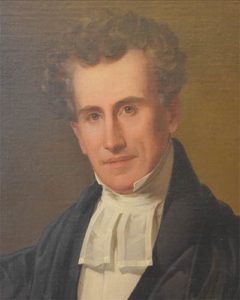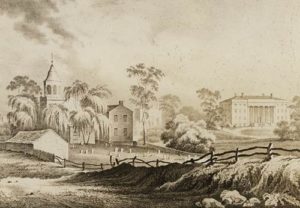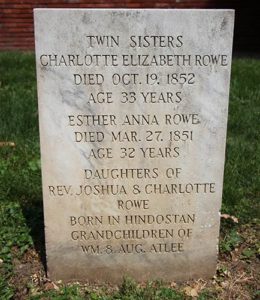Missionaries & Visionaries I

William Augustus Muhlenberg, Jacob Eichholtz, 1836 Oil on canvas Courtesy of The Arthur H. Aufses, Jr., MD Archives, Icahn School of Medicine at Mount Sinai, Mount Sinai Health System, New York, NY.
William Augustus Muhlenberg(1796 – 1877)
- One of the most influential clergy of the mid-nineteenth century. He was born into a distinguished Lutheran family in Philadelphia. His great-grandfather was Henry Melchior Muhlenberg, considered the father of the Lutheran Church in the United States.
- William Augustus was left fatherless at an early age. Although his mother was Lutheran, he decided to attend Christ Church in Philadelphia, an Episcopal church, because he did not understand German.
- He was ordained a deacon in the Episcopal Church and became an assistant to Bishop William White who was also rector of Christ Church, Philadelphia.
- Rector of Saint James (1820-26) with the Rev. Joseph Clarkson.
- Largely due to Muhlenberg’s experience as a director of public schools in Philadelphia (the first public school district in the state), Lancaster City and incorporated boroughs of the county formed the second school district of the state in 1822 when they committed to providing public education for poor children at public expense.

Photograph of drawing of the Institute at Flushing, NY (1828-48) T.K. Wharton.
- In 1823, he published his own collection of hymns, Church Poetry, which was used at Saint James. Later he wrote the first authorized hymnal of the Episcopal Church which was used until 1872.
- He created the Flushing Institute (1828-48) and St. Paul’s College (1838-48) on Long Island, both influential models of Christian boarding schools.
- In 1846, Rector of the Church of the Holy Communion, New York City, a church renowned for its “evangelical catholic” character and its ministry to the poor.
- Muhlenberg led the movement to relax the liturgical rigidity of services and to allow bishops to ordain clergy of other Protestant denominations so as to build a more effective and tolerant Christianity for a young nation.
- He established St. Luke’s Hospital in New York in 1858, and an order of deaconesses, the Sisterhood of the Holy Communion, to provide nursing. Saint Luke’s Mount Sinai is one of New York’s largest hospitals today.
- In 1870 he developed St. Johnland on Long Island, a utopian community informed by Christian socialism.

Charlotte is buried in the plot next to this gravestone marking the graves of her twin daughters in the Saint James churchyard. Courtesy of Nancy LeVasseur.
Charlotte Hazen Rowe (1782 – 1863)
- Daughter of Esther and Judge William Augustus Atlee, she was baptized at Saint James.
- Orphaned as a young child, Charlotte went to Massachusetts to live with a sister.
- She became a Baptist in 1806 following the death of her first husband and baby.
- In 1815, Charlotte became the first American woman to be recognized as a missionary by any religious body when the Baptist Board of Foreign Missions appointed her to serve in Burma.
- In Calcutta, India, Charlotte married the Rev. Joshua Rowe, a British missionary, becoming a partner in ministry, teaching and managing schools, and leading worship in Digah, near Patna.
- Following her husband’s death in 1823, she continued working as a missionary. However, the British Baptist Missionary Society considered her a widow, not a missionary, and only gave her a modest grant as support until she could provide for herself and her family.
- Charlotte taught in small schools in Pennsylvania and Alabama when she returned to America in 1829.
- She is buried in an unmarked grave close to her parents and twin daughters in the Saint James churchyard.
